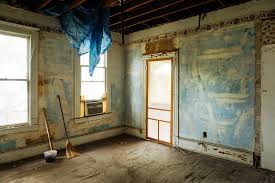Property rehabilitation services offer invaluable expertise and strategic guidance to property owners and investors seeking to revitalize real estate assets. This article explores the significant benefits of engaging professional property rehabilitation services, emphasizing how these services contribute to enhancing property value, attracting tenants or buyers, and ensuring long-term success in the real estate market.
Introduction to Property Rehabilitation Services
Property rehabilitation, also known as property renovation or redevelopment, involves comprehensive renovation and improvement efforts aimed at rejuvenating real estate assets. These services are essential for restoring older or distressed properties to their optimal condition, thereby maximizing their market appeal and investment potential.
Key Benefits of Property Rehabilitation Services
- Enhanced Property Value:
- Strategic Renovation: Professional property rehabilitation services employ strategic renovation plans tailored to maximize property value.
- Aesthetic Upgrades: Enhance curb appeal and interior aesthetics through modern design trends, high-quality materials, and stylish finishes.
- Increased Rental Income Potential:
- Marketability: Renovated properties attract higher-quality tenants willing to pay premium rents for upgraded amenities and improved living conditions.
- Tenant Satisfaction: Enhance tenant retention rates by providing updated facilities and desirable living spaces that meet modern lifestyle expectations.
- Faster Property Turnover:
- Attractiveness to Buyers: Renovated properties appeal to a broader range of potential buyers, facilitating quicker sales and reducing time on the market.
- Competitive Advantage: Stand out in the competitive real estate market by offering turnkey properties that require minimal immediate renovation by new owners.
- Cost Savings and Efficiency:
- Preventive Maintenance: Address maintenance issues proactively during the rehabilitation process, reducing future repair costs and minimizing operational disruptions.
- Energy Efficiency: Implement energy-efficient upgrades that lower utility expenses for tenants and increase property sustainability.
- Compliance and Risk Management:
- Building Code Compliance: Ensure properties meet current building codes and safety standards, reducing legal liabilities and potential fines.
- Environmental Regulations: Navigate environmental regulations and sustainability requirements through eco-friendly building practices and materials.
- Long-Term Asset Appreciation:
- Investment Protection: Preserve and enhance property value over time through strategic improvements and proactive maintenance.
- Market Resilience: Position properties to withstand market fluctuations and economic downturns with attractive, well-maintained assets.
Case Studies and Success Stories
- Before-and-After Transformations: Showcase successful property rehabilitation projects that have significantly increased property value and rental income.
- Client Testimonials: Highlight positive experiences and outcomes from property owners and investors who have utilized rehabilitation services to achieve their investment goals.
Conclusion
Property rehabilitation services play a crucial role in revitalizing real estate assets, enhancing property value, and ensuring long-term success for property owners and investors. By leveraging professional expertise in strategic renovation, market analysis, and compliance management, stakeholders can maximize investment returns, attract quality tenants or buyers, and position their properties competitively in the real estate market. Embracing property rehabilitation as a proactive investment strategy not only revitalizes aging or distressed properties but also creates sustainable, desirable assets that contribute to overall portfolio growth and financial stability.










